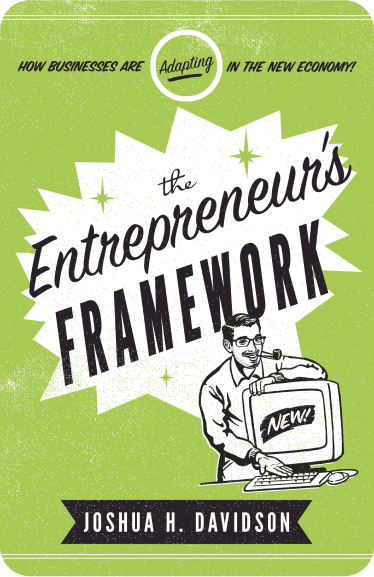Are you looking for a way to manage your time better? There are a lot of different time management systems out there, and it can be hard to know which one is right for you.
In this post, we’ll take a look at the most popular time management systems and see what they have to offer. We’ll also discuss some of the pros and cons of each system so that you can decide which one is right for you.
Let’s get started!
The Pomodoro Technique
The Pomodoro Technique is definitely one of the most referenced time management systems. We have even mentioned it on the blog before!
But, what exactly is it? And how does it work?
“The Pomodoro Technique isn’t just about helping you get things done today; it’s about learning how you work so you can save time in the future.” —Pomodoro
So, exactly how does it work, well, according to Pomodoro, distrations and burnout are the biggest timewasters. This method seeks to mitigate this issue with strategic breaks. Here is the exact process:
The Method
- Choose something that you need to complete right away.
- Spend 25 uninterrupted minutes on this task.
- If interruptions arise, write them down and table them for later.
- When the timer goes off, take a five-minute break.
- Every fourth break is a longer one. You can take 15, 20, or even 30 minutes to refresh your mind.
One big pro of this method is that it’s incredibly simple. The whole point of time management systems is to make your life easier, so you can be more productive. If you feel burned out with your workload, this may help you manage it.
Remember: If you feel that a time management system is making your life harder, then it is the wrong one for you.
However, if you are the kind of person that works more efficiently with long uninterrupted intervals of concentration, you may find having to stop in the middle of your flow state bothersome. In that case, maybe the Pomodoro technique is not for you.
The Eisenhower Matrix
This is another often referenced time management system that we have mentioned before on the blog!
The Eisenhower Matrix is also sometimes called the Urgent-Important Matrix. It essentially empowers users to organize their tasks by urgency. Here is how it works:
First, organize your tasks into four quadrants:
- Quadrant 1: Do First. These are tasks to be tackled immediately. Use a timer if needed to complete these.
- Quadrant 2: Schedule. These are tasks that, although important, can be scheduled for a later date. These should be added to your calendar.
- Quadrant 3: Delegate. While these are important, they can be handled by someone else.
- Quadrant 4: Don’t Do. These are unimportant and non-urgent tasks and therefore do not need attention.
If you are someone with a lot on your plate who often can’t decide what to do first, this is an ideal time management system for you.
This can be an especially powerful tool for managers or people who have to coordinate larger-scale projects that involve multiple people or departments.
However, if you don’t have anyone to delegate tasks to, you may want to modify this system or opt for something else.
Time Blocking
This one is another popular one that functions just like it sounds.
According to Cal Newport, the inventor of this method:
“This type of planning, to me, is like a chess game, with blocks of work getting spread and sorted in such a way that projects big and small all seem to click into completion with (just enough) time to spare.”
This method is great for visual learners and thinkers. You essentially create a visual schedule for your daily tasks that looks like one you might have had in middle school. Here is how it works:
- Each evening, divide a piece of paper into two columns.
- Dedicate two lines to each hour of the day and then divide that time into blocks labeled with specific assignments.
- In the right column, add explanations for these blocks.
- If something changes, simply scratch out your time block and reorganize it the next day.
If you are a visual thinker who loves a to-do list, this one may appeal to you. Also, if you enjoy a methodical approach and planning ahead, this may work perfectly for you.
However, if you are specifically looking for help with concentration, structure, or prioritizing tasks, this method will likely not provide it.
The 1-3-5 Rule
This time management system was invented by Alex Cavoulacos, co-founder and chief operating officer of The Muse. She actually created it for herself.
Essentially, this method encourages users to complete one large task, three medium tasks, and five small ones every day.
It also makes allowances for irregular days. Say, for example, you had a travel day or an unusually long meeting. In this case, you can pare your to-do list down to two medium and three small items.
A big pro of this method is simplicity. However, it may be a bit vague and not provide enough structure for some people.
Getting Things Done
Also known as GTD, this method is definitely one of the most famous. David Allen, a leading authority in organizational and personal productivity, wrote the original book about this time management system. It was published in 2001.
Here is the process:
- Capture. Record, write or type your entire professional and personal task list.
- Clarify. Look at your list, decide what needs your immediate attention, and take action. Everything else should be archived, deleted, or delegated.
- Organize. Make categories and list all action items under each category.
- Reflect. Go through all list items at least weekly. Determine the next steps and make list updates where needed.
- Engage. Now that you’re organized, decisions become faster and less stressful. Balance and clarity are added to your life.
This one is interesting because it can be applied to almost any area of your life, whether it’s your work, keeping your home clean, or pursuing personal projects.
If you are someone who is looking for ways to increase productivity and decrease stress in many areas of your life, this could be a perfect time management system for you.
However, as it is quite customizable and flexible, it may not appeal to those who seek more specific structured solutions.
Don’t Break The Chain
This one has an interesting origin story. When Brad Isaac was beginning his career as a comedian, he asked Jerry Seinfeld for advice. Seinfeld told him, “Don’t break the chain.”
According to Seinfeld, taking breaks ruins your momentum creatively, and can lead to you skipping days and days and going off track completely.
The advice of this time management system is to work toward a goal every day without taking breaks. Here is the process:
- Pick a goal.
- Buy a wall calendar and a red marker.
- Place a red X on every day you work toward this goal.
- Try not to go a day without touching that goal.
This is a system with very specific applications. For example, if you are trying to learn a new skill. This is a great system to help keep you accountable when it comes to meeting specific goals.
However, it is really not something that you can use to manage your entire professional or personal life, unlike some of the others. On a large scale, breaks are actually an important part of any creative process.
Final Thoughts on Time Management Systems
Ultimately, these systems are tools meant to help you be your most productive. And of course, there are many out there besides the ones featured in this post.
Which you choose should depend on your own goals and working style.
For example, say you want to learn a new coding language. The Don’t Break The Chain system may be a great way to help you stay on track. However, if you struggle with prioritizing tasks, the Eisenhower Matrix may be the one for you.
What do you think? Do you use a time management system already? Comment below.
Since 2009, we have helped create 400+ next-generation apps for startups, Fortune 500s, growing businesses, and non-profits from around the globe. Think Partner, Not Agency.
Find us on social at #MakeItAppn®

















